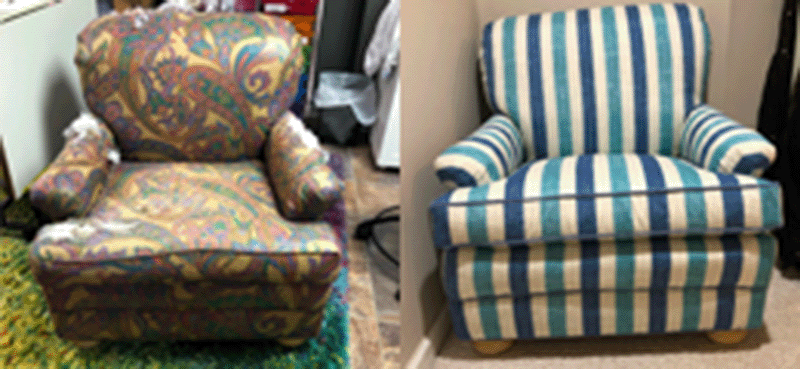Reupholstering a Chair
I had been wanting to teach myself to reupholster a chair for a while. Then I found this chair at Habitat for Humanity’s Lawrenceville, GA Re-Store.
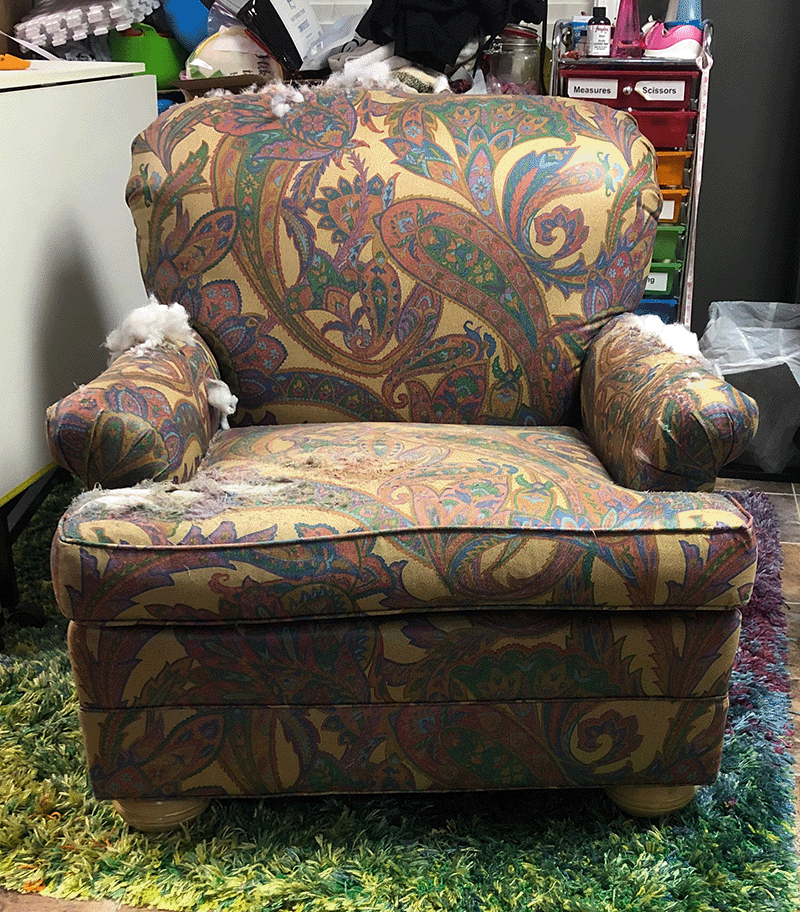

I liked the shape of the chair, which kind of reminded me of Chair-y from PeeWee’s Playhouse.
The chair lived in my basement for several months, where it was abused by our cat. Then I finally decided to tackle the reupholstery project. I reupholstered it in sturdy indoor-outdoor fabric so we could use it as a sturdy yet comfortable chair in our beach house.
Materials and tools to reupholster a chair
- Heavy duty staple remover and tack puller tool
- 9 yards of the base striped fabric
- 1.5 yards each a coordinating solid color fabric use for piping
- 1 yard of a coordinating solid color fabric to use for the hidden area under the seat cushion
- A few yards of cardboard Upholstery Tack Strip
- 4 24-inch Metal Upholstery Tack Strips (Available in several lengths. Length needed may vary by type of chair)
- Upholsterer’s tools, including a tack hammer and pliers
- A good staple gun; (I began the process using a manual staple gun, but quickly bought an electric version when I realized how hard it was to staple into the wooden posts and rails).
- Curved upholstery needle and heavy thread to sew in the seat cover
- 36” non-separating metal upholstery zipper
- Seam Ripper or surgical scalpel to use as a seam ripper
- Cord for piping
Disassembling the chair
The first half of the process to reupholster a chair was to remove the old stuff. I removed all of the old outer upholstery fabric and hardware from the chair.
Two things that I did during disassembly made reassembly much easier:
- As I removed the old materials, I tried to keep the fabric whole. I was careful to make as few tears as possible. This allowed me to use the old material as a pattern to cut the new fabric.
- I documented the details of the construction while I removed the old materials. I took tons of notes as I worked. I snapped lots of photos, especially for areas that looked like they would require more complex work for the reupholstering. I noted the way each section of fabric overlapped the next. I used this information to document the order that the original upholstery pieces were applied in.
The bottom
- I started by turning the chair upside-down and removing the old cardboard tack strips. Ideally, I would have removed the black fabric covering the bottom of the chair. But I wasn’t able to remove the biscuit feet, so I just removed the staples holding the fabric to the chair. Then I peeled back the fabric as far as possible to uncover the bottom edges of the paisley fabric.
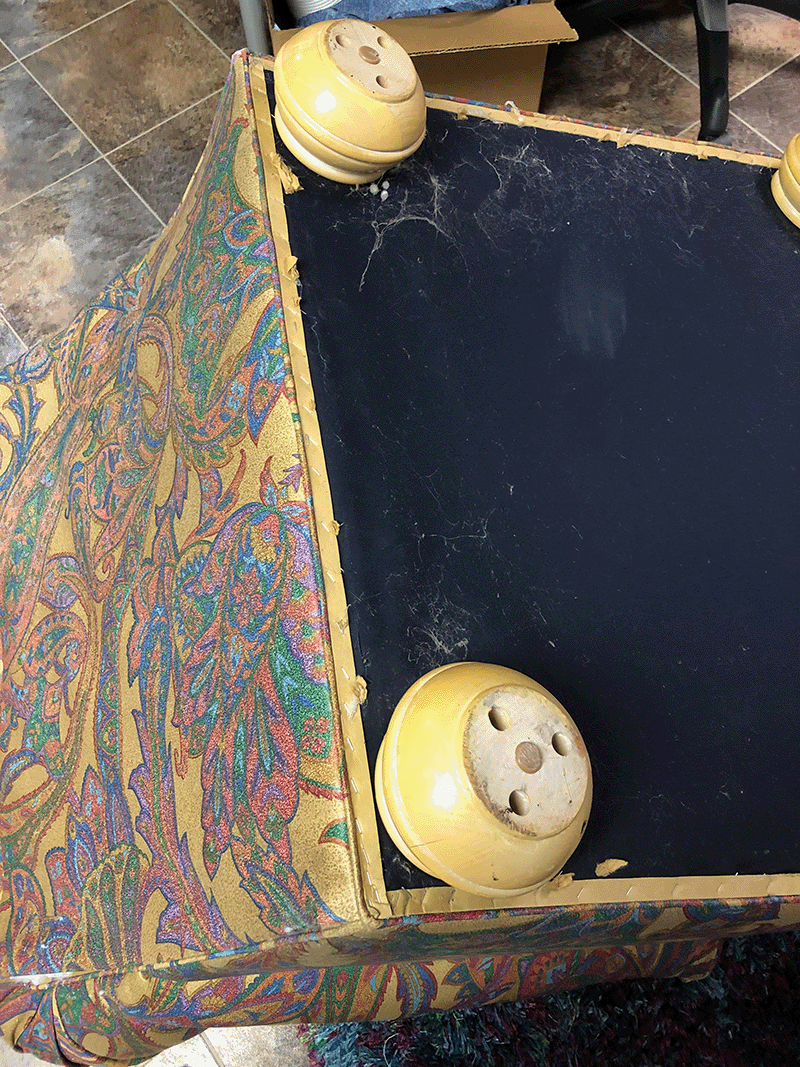
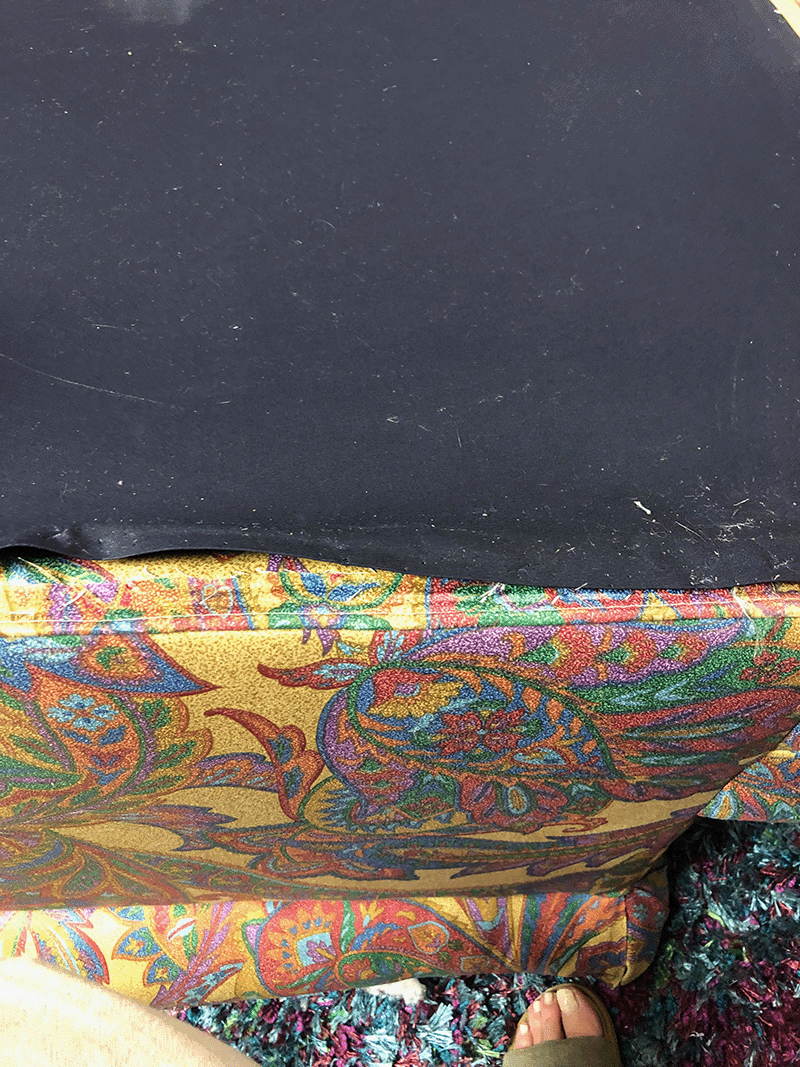
- I removed all of the staples from the piping around the bottom edge, Then I then removed the staples holding the bottom edges of the paisley fabric to the chair frame.
The back
- Once all of the fabric edges were unattached from the bottom frame, I turned the chair and worked on removing the back panel. I began with the side edges of the back panel, where the fabric was turned over metal tack strips. To pull these strips from the frame, I used my tack puller tool to pry the strips off of the wood.
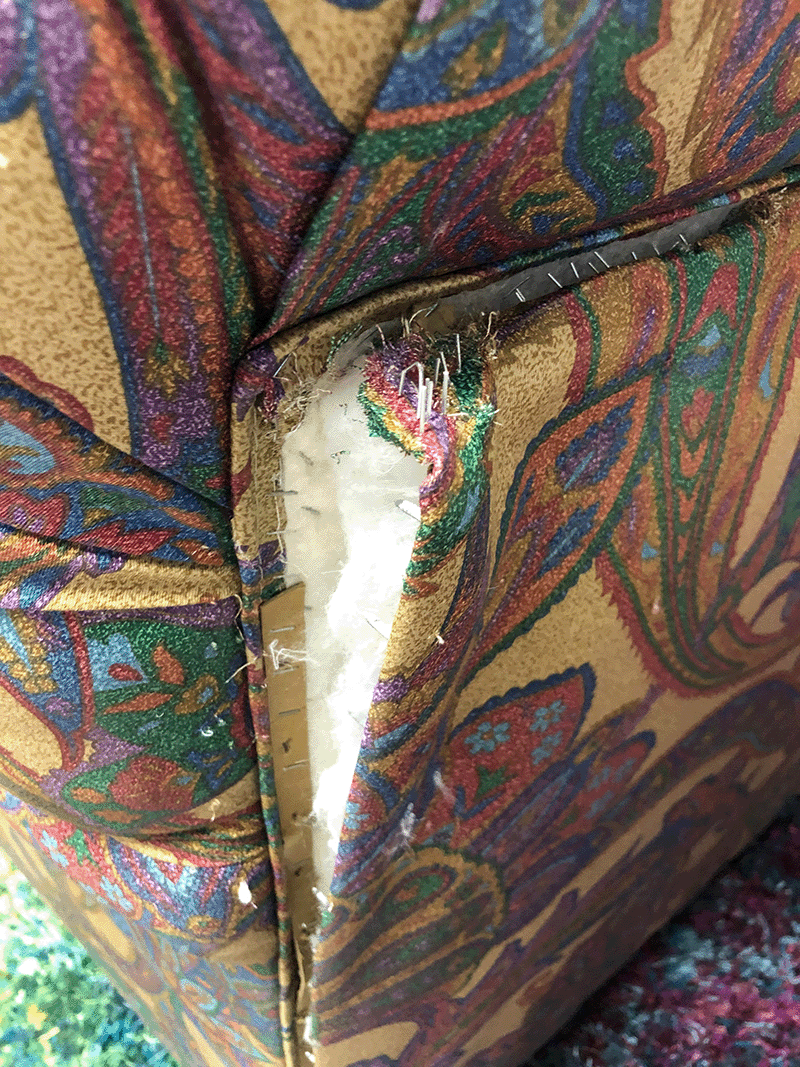
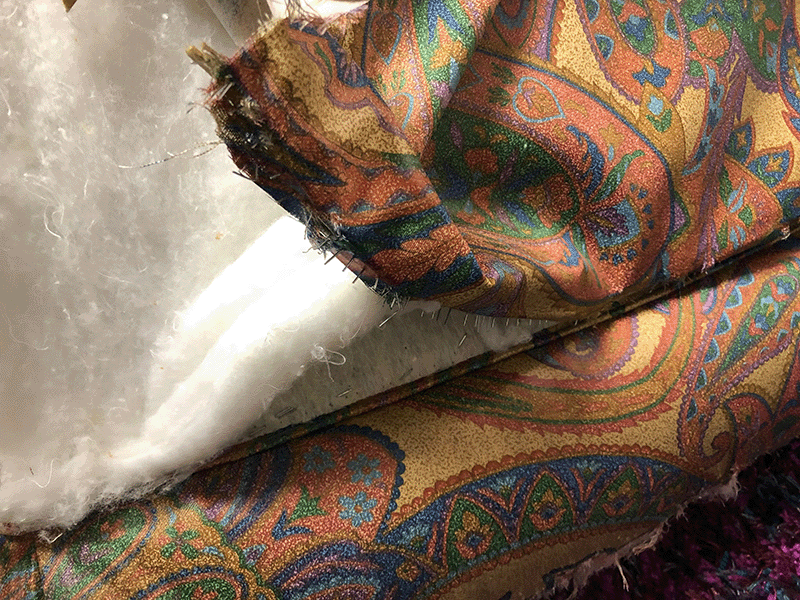
- I then pulled off the top edge of the back panel. The fabric here was wrapped around a cardboard tack strip which was stapled into the frame.
- Once the entire back panel was free, I carefully removed the side metal tack strips, all of the staples, and the top cardboard tack strip. I saved the fabric piece to use as a pattern for the new fabric.
- Next, I carefully removed the padding from the back panel. I preserved (and labeled) it to use when I rebuilt the chair. I then removed all remaining cardboard strips and staples left after the padding removal.
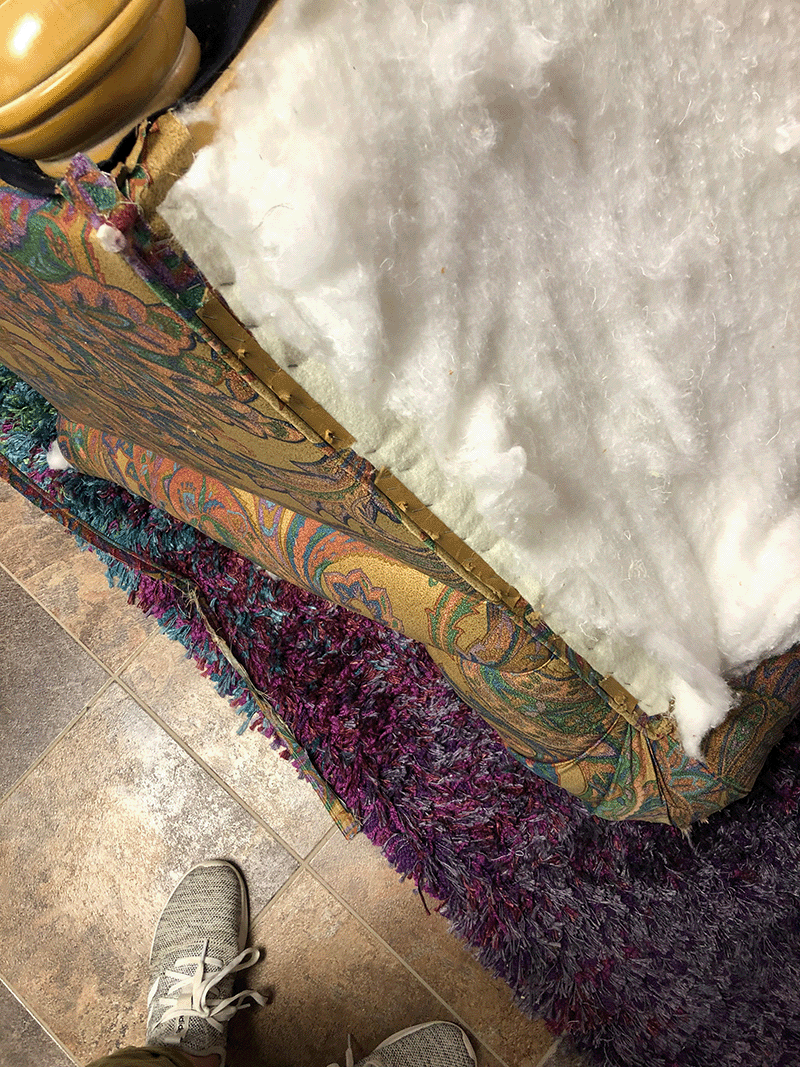
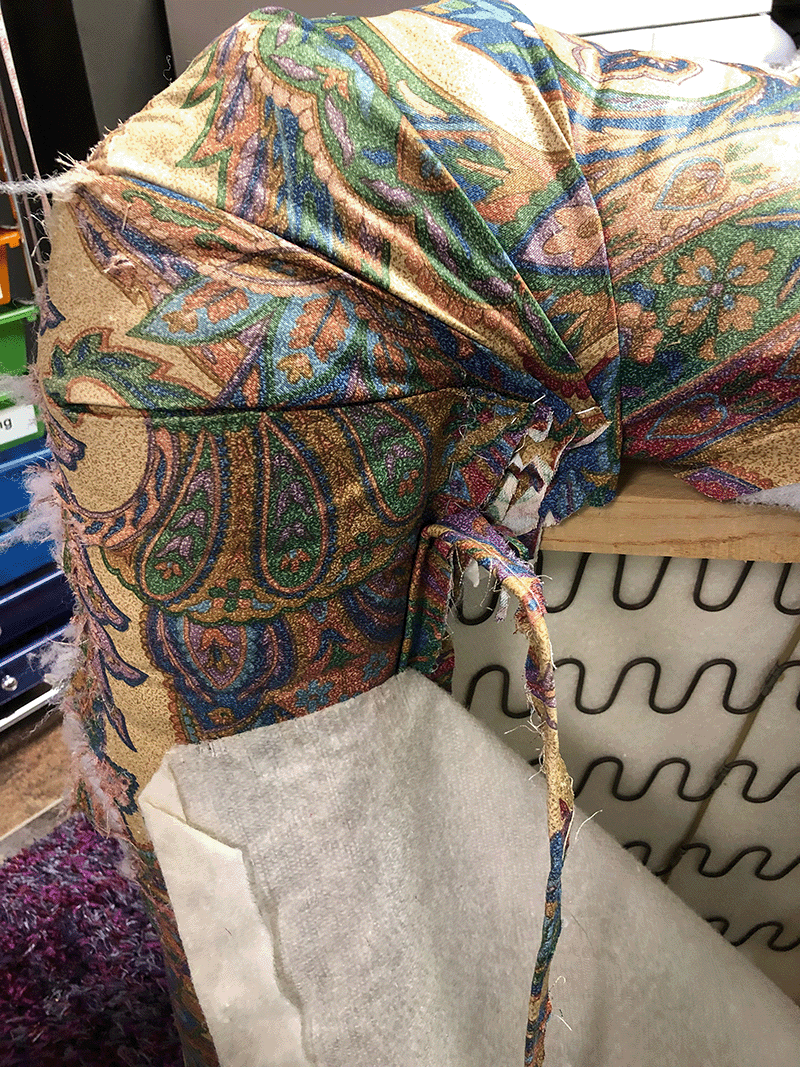
- Then I carefully removed the webbing that was under the back panel. I was careful not to tear the webbing fabric. I also removed the piping that was around the edges of the back panel. I preserved (and labeled) the webbing to reuse.
The side panels
- Once all of the materials were removed from the back panel, I moved to the side panels (on the outside of the arms.) I removed each side panel the same way I removed the back panel. First I pulled the two vertical tack strips off the wooden frame with my Tack Puller. Then I pulled the top edge off by removing the staples and fabric wrapped around the top cardboard strip. I carefully unwrapped the fabric from the tack strips. I set aside (and labeled) each side panel fabric piece to use as a pattern for the new fabric.
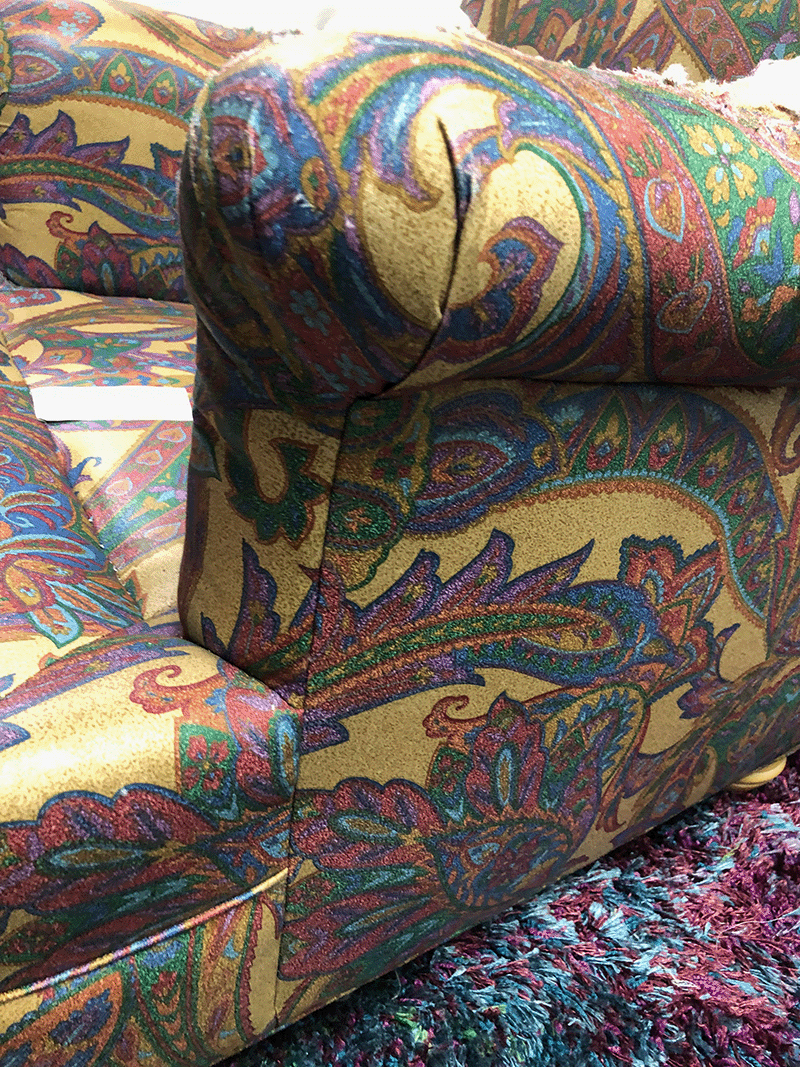
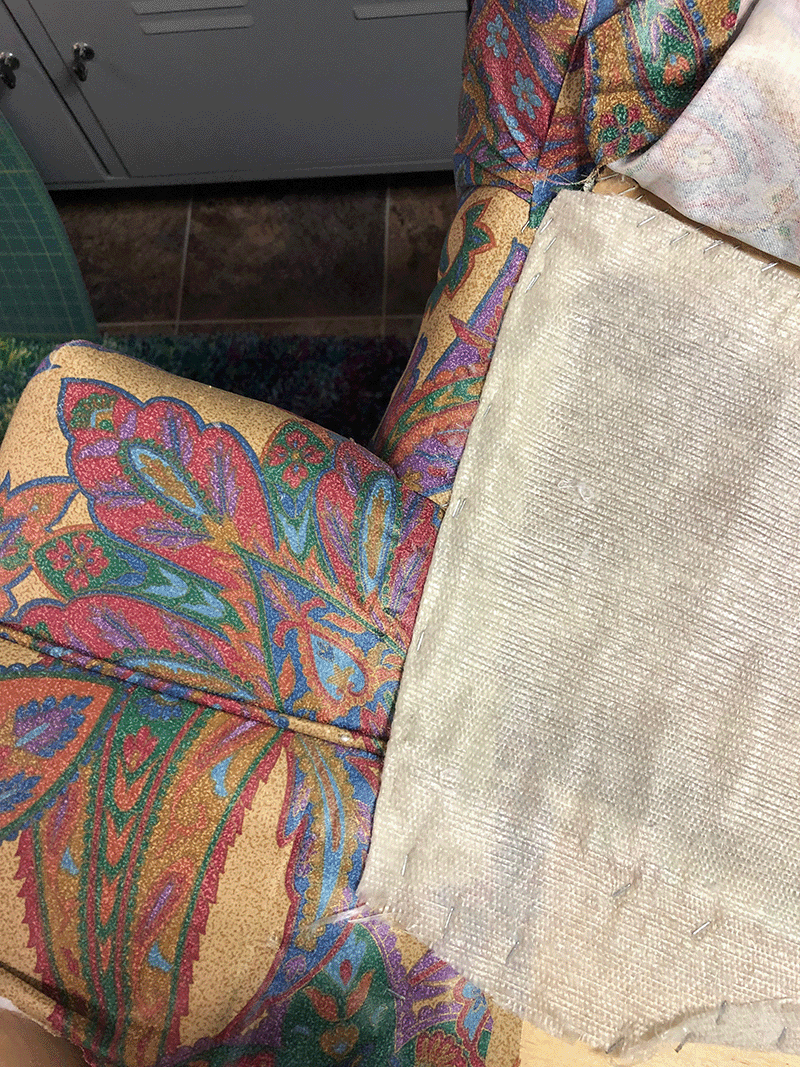
- Next I removed the padding and webbing that were under the side fabric panels. I preserved (and labeled) both to use in the rebuilt chair.
-
This is how the chair looked with the side panel materials fully removed.
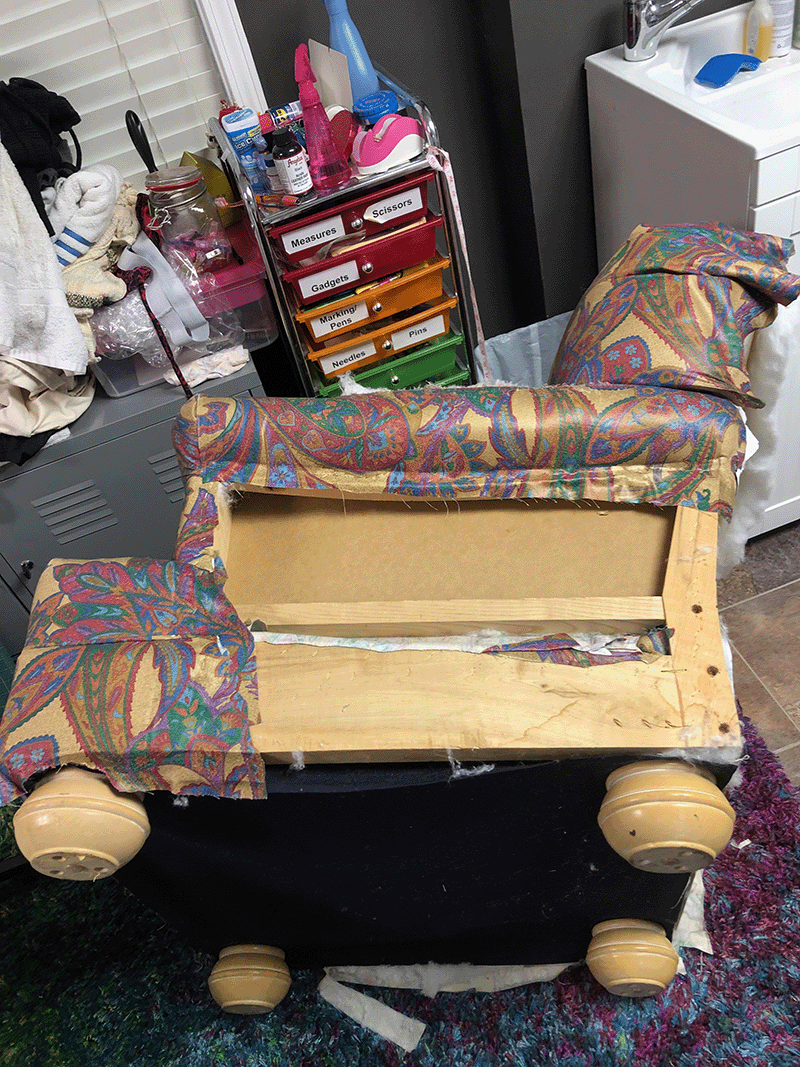
The front apron
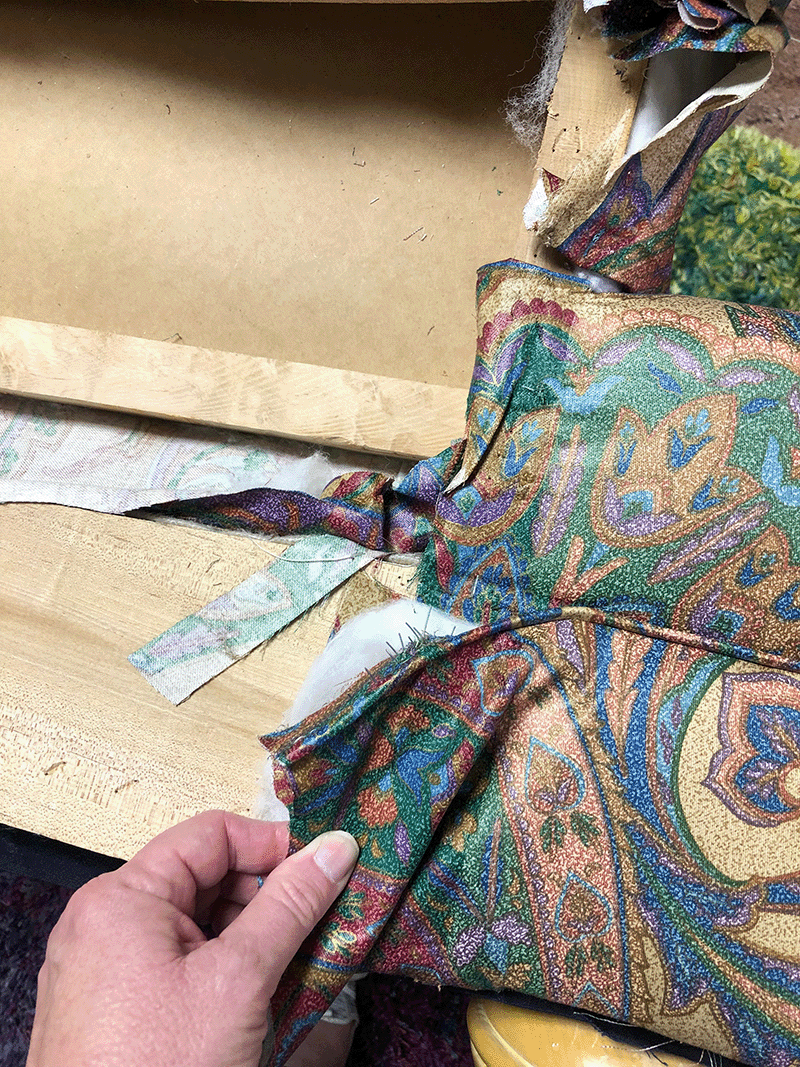
- Next, I removed the lower front apron that wrapped around a few inches on both sides. I also removed the piping that edged it.
The arms and the rest
- Then, I removed the fabric from the arms. This fabric was stapled at the bottom of the side panel area. So I removed those staples until I was able to pull the fabric free. As I was reaching down inside the chair side to remove this fabric, I found coins and other interesting things that the original owner lost there along the way. I then removed the padding panels from the arms. I preserved and labeled them for reuse.
- Next, I removed the fabric covering the chair back. I removed the staples that secured the fabric to the lower frame, and the chair back padding. I preserved the padding and labeled it for the re-build.
- The last piece of fabric to remove was the inner seat covering. I removed the upper front apron and padding, leaving the webbing underneath intact. These fabric pieces were sewn together, so after I removed them I used a seam ripper to remove the seams. I marked them to show how to assemble the replacement fabric pieces.
Disassembling the seat cushion
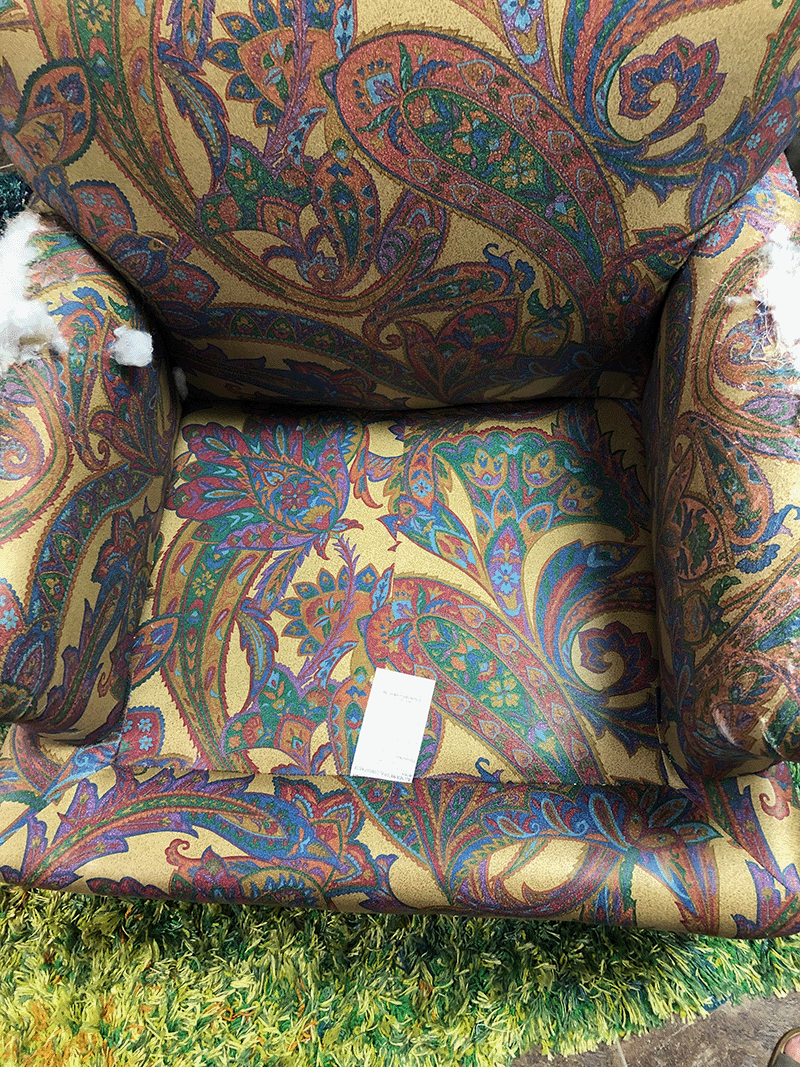
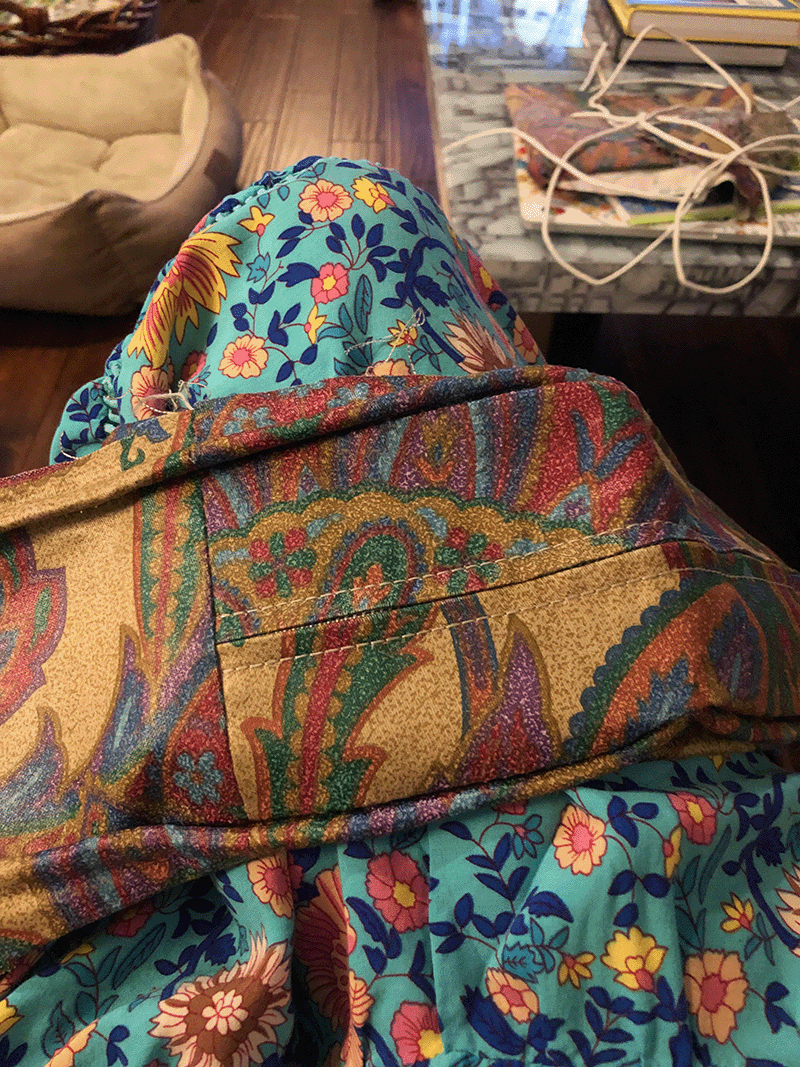
- I then used a seam ripper to disassemble the separate seat cushion. This included removing the back zipper. I preserved the fabric pieces to use as patterns for the new fabric. And I kept the padding and foam core to reuse in the rebuild. I discarded the zipper since it was aged and would be replaced with a new zipper.
Rebuilding
Then it was time to rebuild the chair. The first rebuild step was to make new piping for the chair. I used the 1.5 yards of solid color fabric for the piping. I measured the combined length of all of the piping I removed from the chair. Then I used this measurement to determine how much piping I would need for the rebuild. I made a couple extra yards to assure I had enough.
Using the measure from above, I started with cutting bias strips from the solid color fabric to cover the piping. Using this tutorial, I cut 1 ¾” wide bias strips from the entire piece of fabric, following the tutorial.
I wrapped the bias strip around the cording. Matching the raw edges, I used a zipper foot to baste a seam as close as possible to the cording.
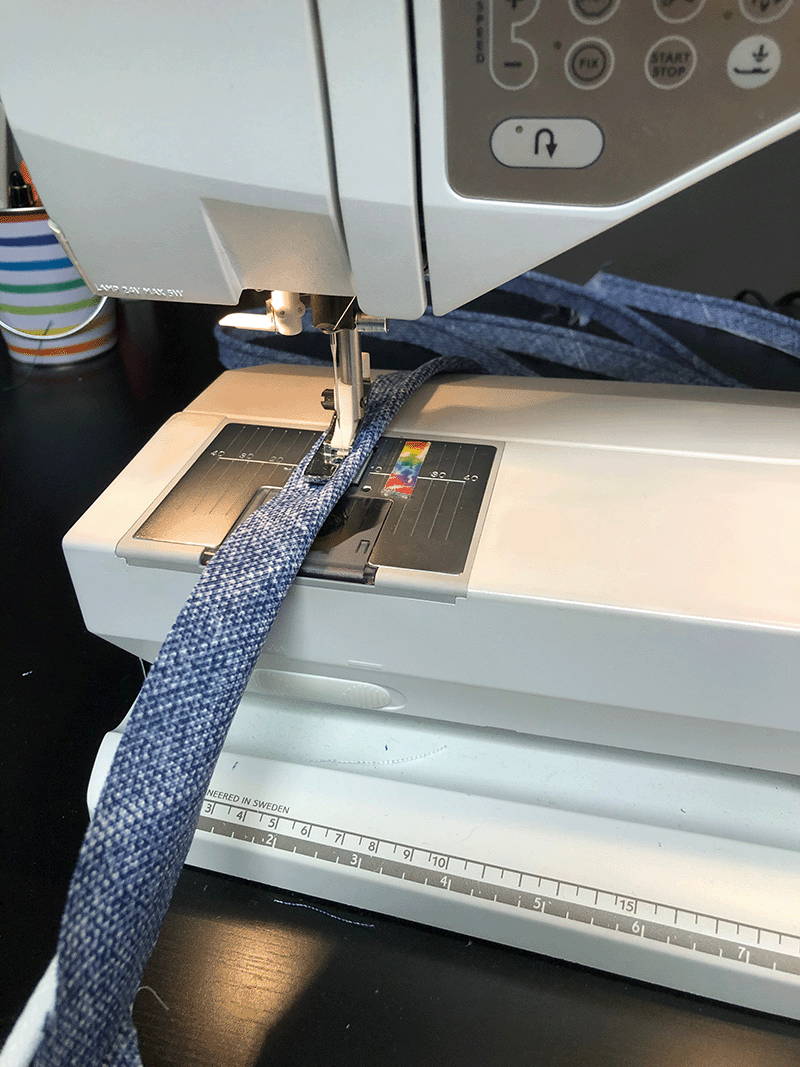
Then, using the original fabric pieces removed from the chair as patterns, I cut new pieces from the new fabric. I was careful to match any stripes, patterns, etc. Using notes and photos from the disassembly process, I reassembled the chair with the new pieces. I worked in reverse order from the disassembly process. I used a good staple gun to secure the new fabric to the wood and replaced the old tack strips with new ones.

